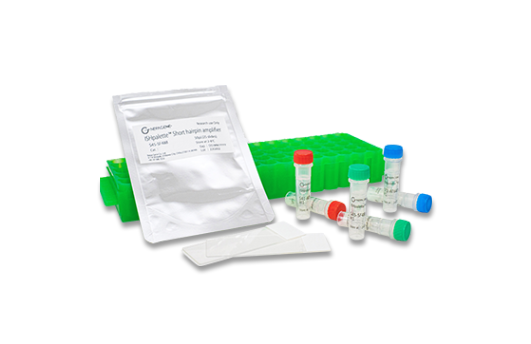Others
Others
ISHpalette™ Short hairpin amplifier
Here is the professional English translation of the technical product description for ISHpalette™:
ISHpalette™ Hairpin Amplicons: Simplify Your In Situ Hybridization Experiments and Usher in a New Era of High-Sensitivity Detection!
Here is the professional English translation of the technical product description for ISHpalette™:
ISHpalette™ Hairpin Amplicons: Simplify Your In Situ Hybridization Experiments and Usher in a New Era of High-Sensitivity Detection!
Are in situ hybridization (ISH) experiments troubling you?
Traditional methods are complex, time-consuming, labor-intensive, and often limited by intricate steps like enzymatic treatment.
ISHpalette™ is here to save your experiments!
I. Key Advantages:
Multiplex Fluorescence In Situ Hybridization (ISH) Technology
Low background noise & high sensitivity
Excellent reproducibility & quantitation
High quality & cost-effectiveness
Superior Compatibility
Compatible with immunostaining & double staining
Requires no protocol optimization
Simple & Fast Operation
No enzymatic treatment required; fewer steps make it easy for any lab personnel
No need for new equipment
Probe Design Service Offered
II. ISHpalette™ Workflow
Requires no special equipment or reagents. Eliminates the need for proteinase K permeabilization, acetylation, high-temperature treatment, or RNase treatment, significantly simplifying the protocol and accelerating the staining process.
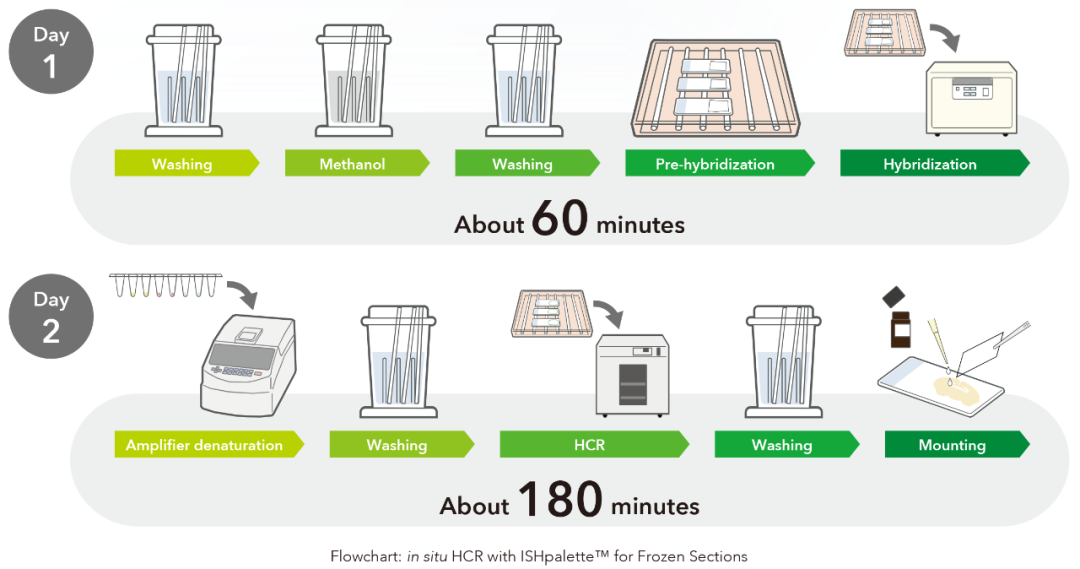
III. What is Hybridization Chain Reaction (HCR)?
An enzyme-free signal amplification ISH technology based on hairpin DNA:
Utilizes the self-assembly and extension of hairpin-structured nucleic acids to mediate a chain reaction of labeled DNA on tissue sections, enabling visualization of target nucleic acids. This technology does not rely on antibodies or enzymatic reactions, offering linear signal amplification and ultra-high signal-to-noise ratio.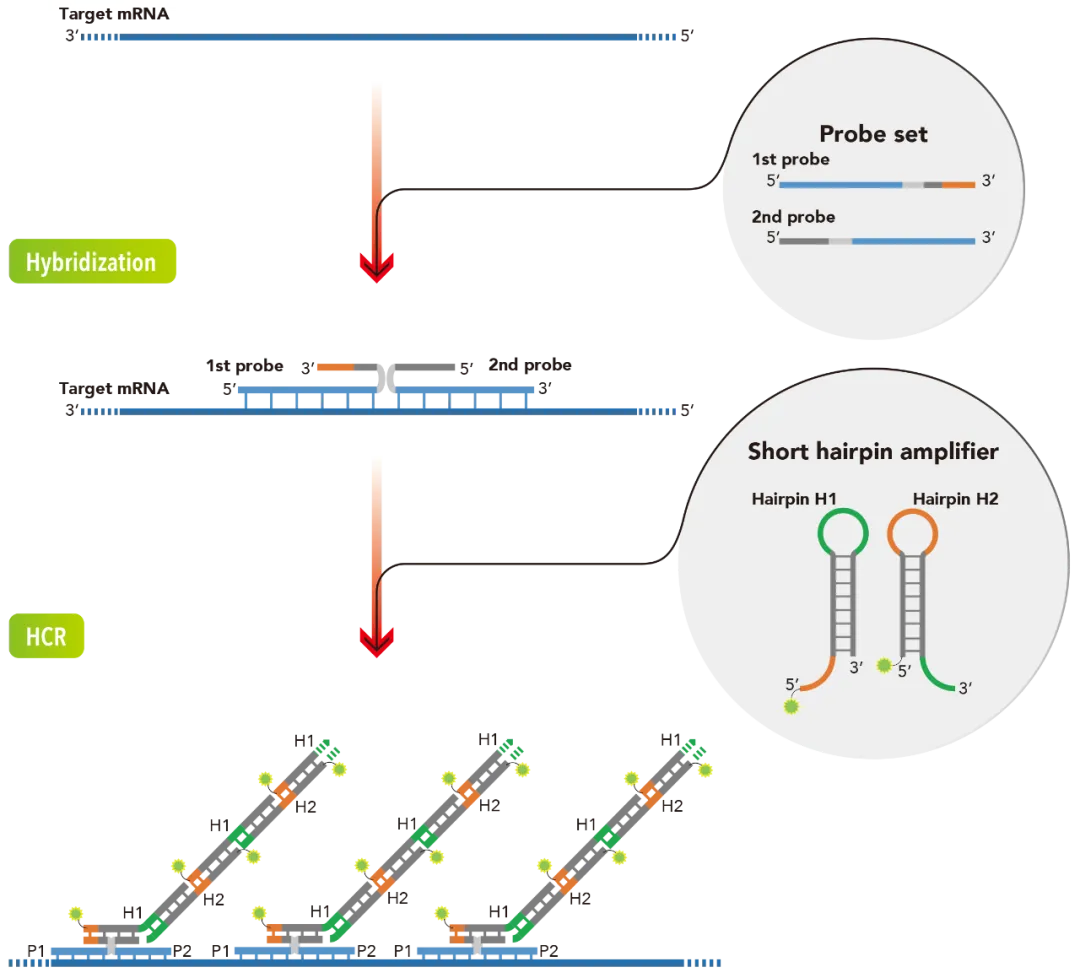
Dual-Probe Precision Targeting Mechanism:
When two probes (both containing HCR initiator sequences) bind to the target, they trigger a cascade amplification reaction of fluorescently labeled hairpin DNA, enabling precise localization of target mRNA and minimizing non-specific reactions.
IV. Experimental Performance
Single-Molecule Detection Sensitivity:
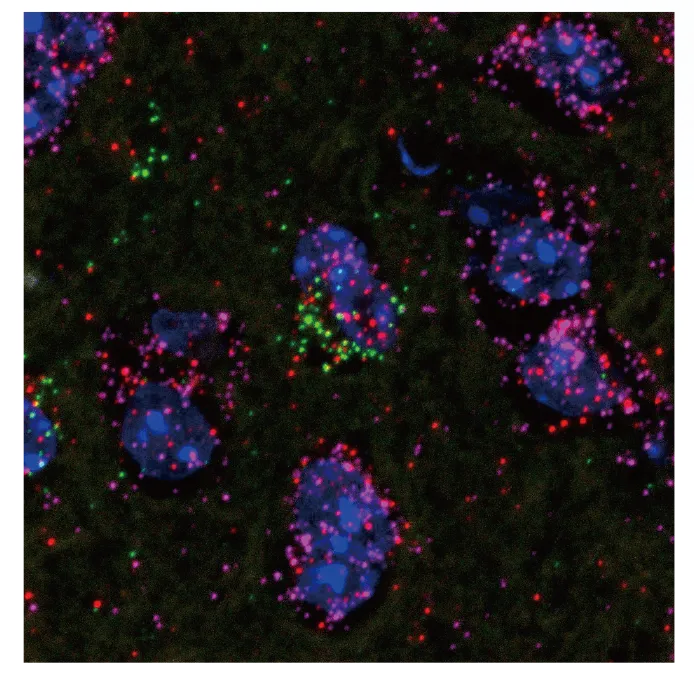
Simultaneous detection of Vglut2 (green), Sik3 (red), and Vgat (magenta) mRNA signals on mouse brain sections. Individual mRNA molecules are visualized as distinct punctate spots.Performance Comparison:
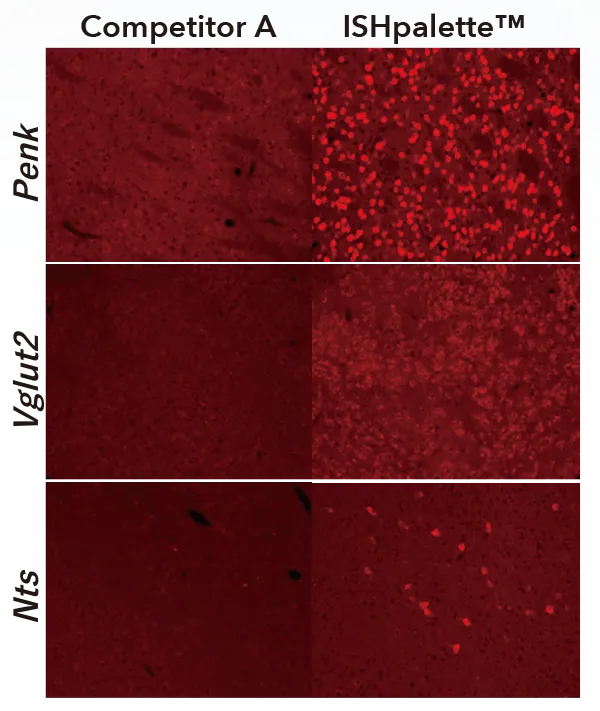
Traditional HCR vs. ISHpalette™ for simultaneous detection of Penk (top panel), Vglut2 (middle panel), and Nts (bottom panel) mRNA expression in mouse brain sections, with signal intensity comparison. Results clearly demonstrate that ISHpalette™, utilizing short hairpin DNA, offers superior tissue penetration and reaction activity. No proteinase K treatment was used in any experiment.No Enzymatic Treatment Required:

Detection of c-Fos protein via immunostaining (left, green) and Vglut2 mRNA via in situ HCR (middle, magenta) on mouse brain sections. In proteinase K-treated samples (top row), weak c-Fos protein signal is detected. In untreated samples (bottom row), both protein and mRNA signals are clearly detected.
V. Compatible Sample Types
Paraffin sections
Frozen sections
Free-floating sections
Adherent/Suspension cells
Whole tissues
VI. Ordering Information
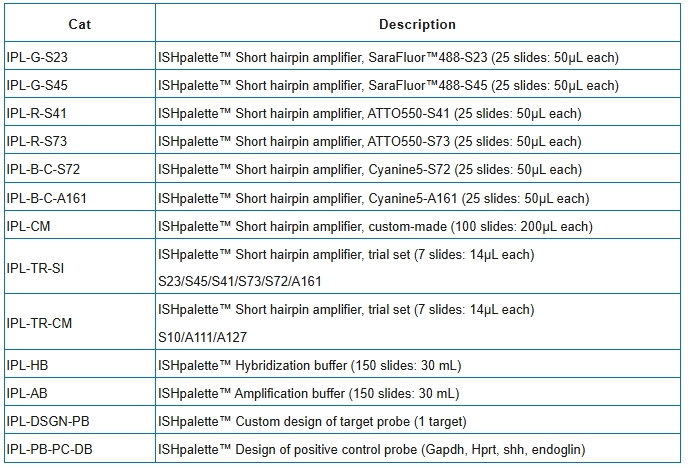
The production of NEPA21 series electroporation instrument, ECFG21 high-efficiency cell electrofusion and electroporation instrument and PicoPipet single-cell separation and extraction system has been well-known in the research field and has been cited by hundreds of literatures, including high-level journal articles, such as Nature, Cell, PNAS, Genes & Dvelopment, etc.
